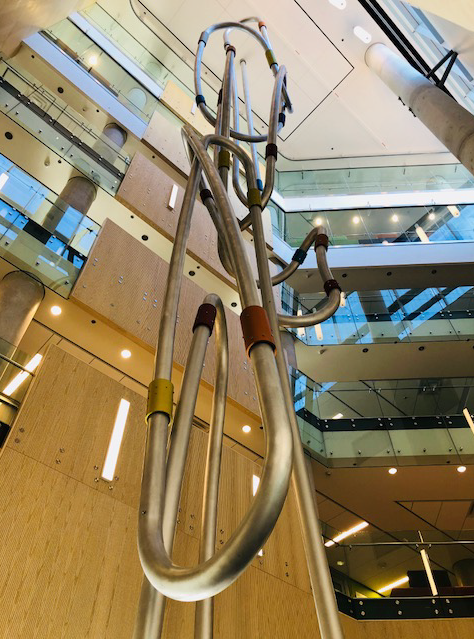
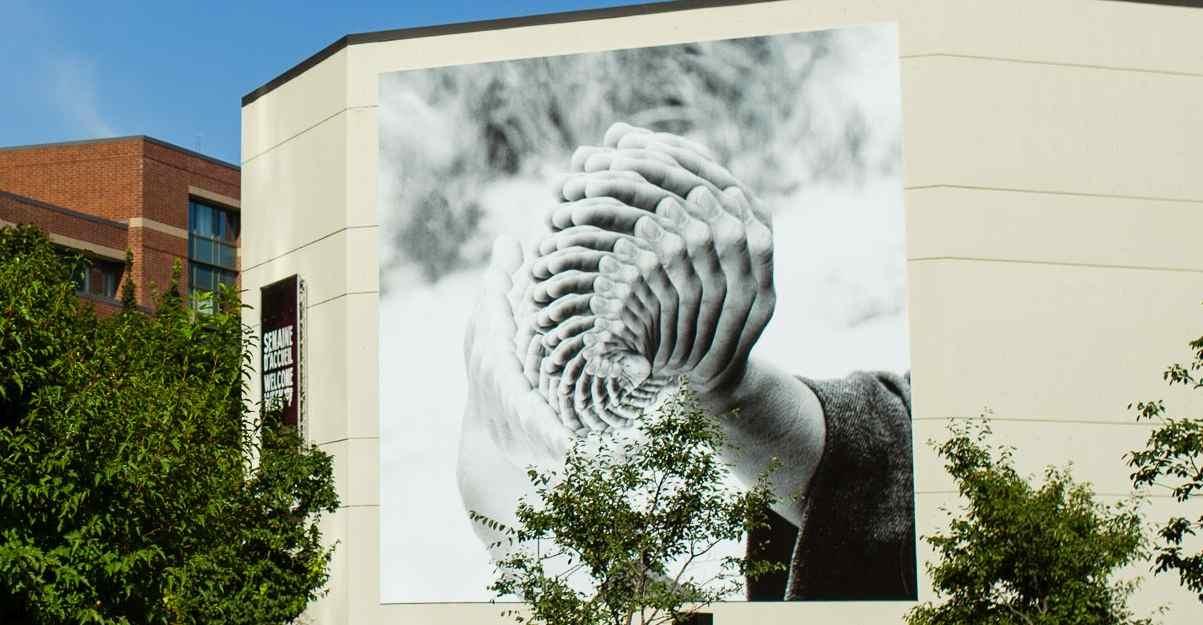
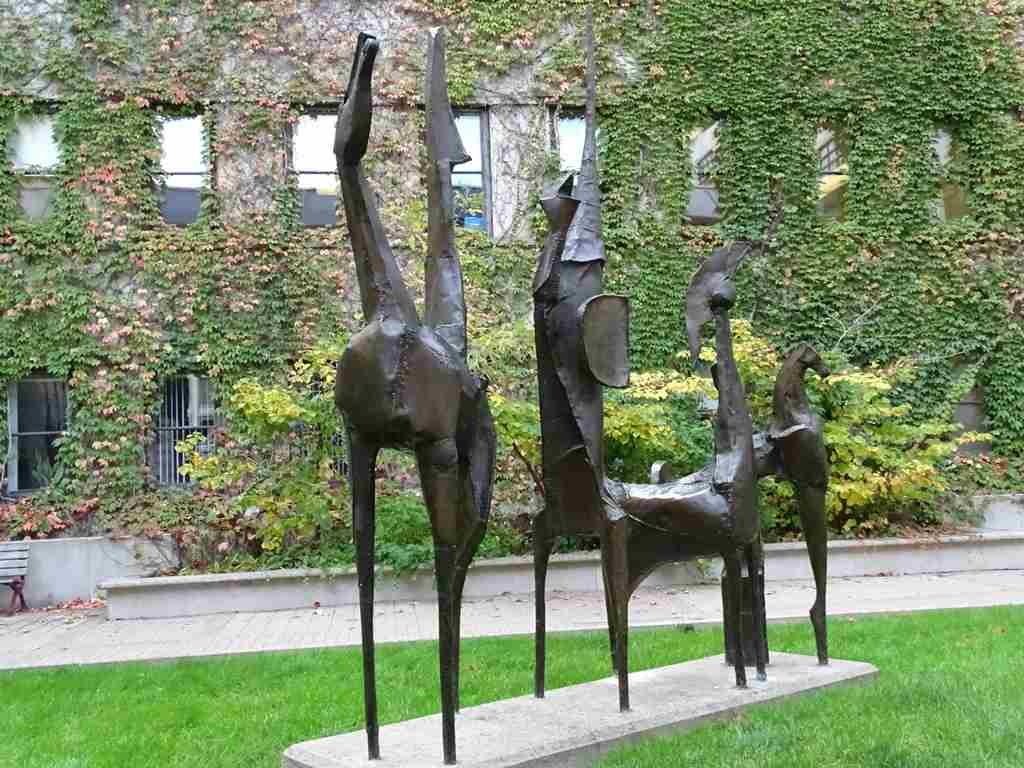
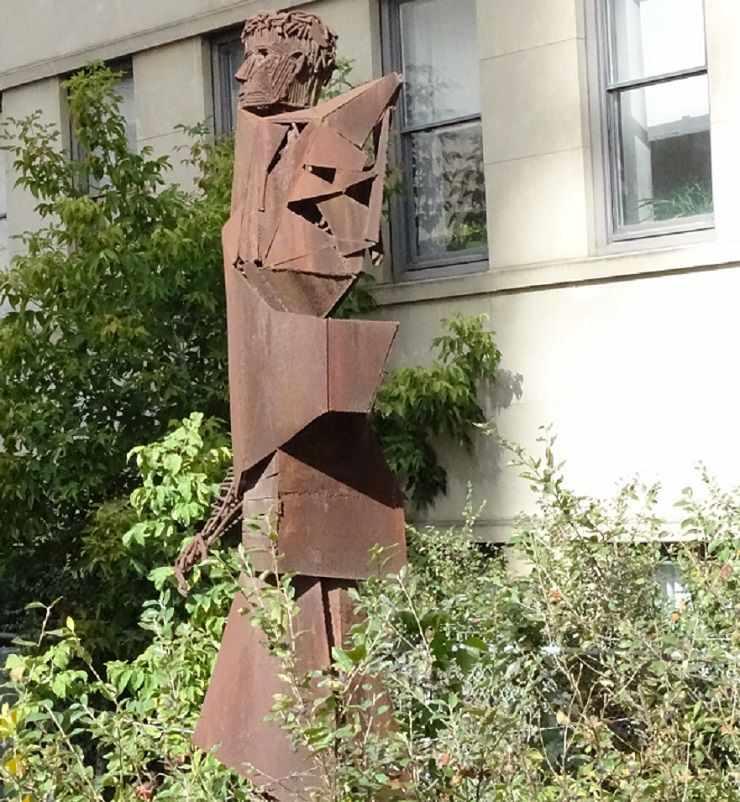
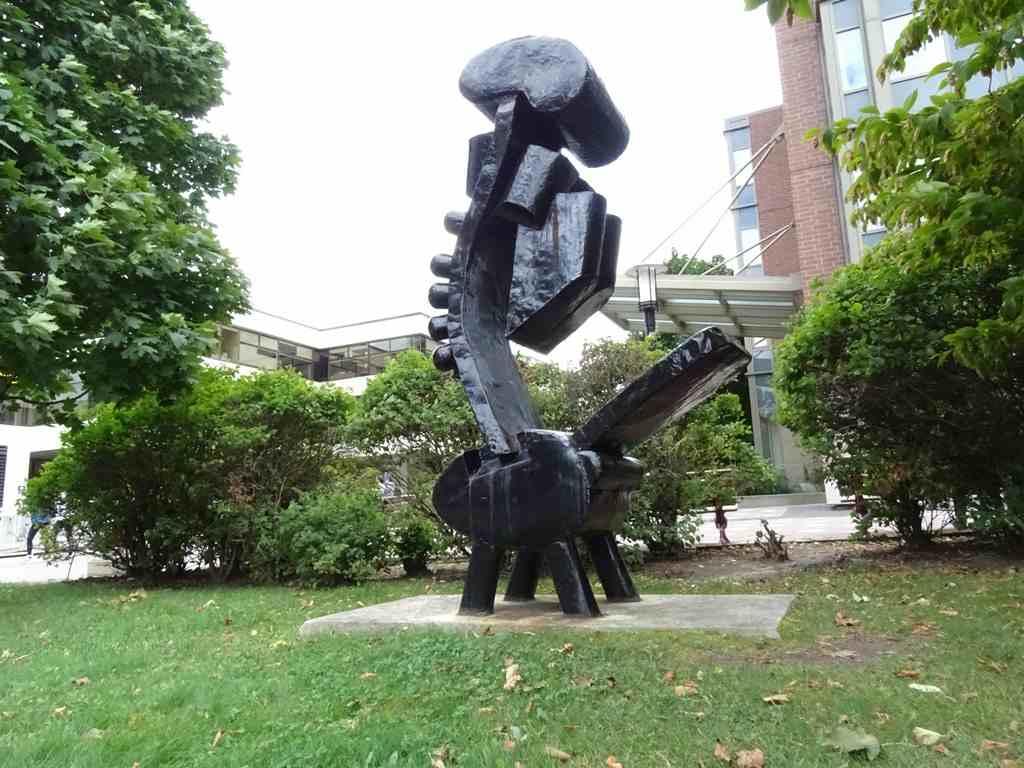
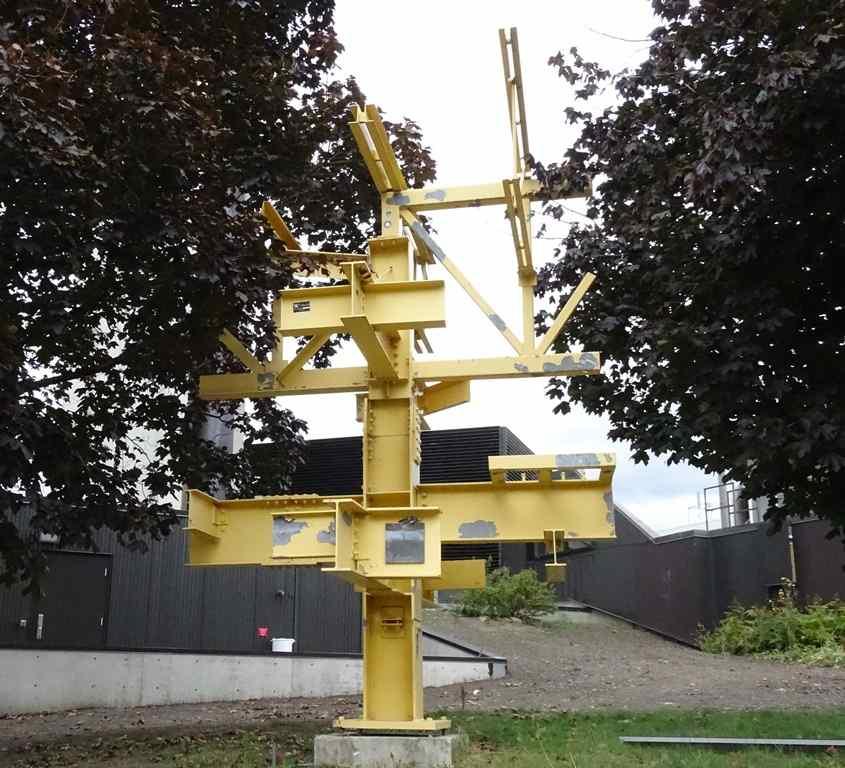
New and old uOttawa artworks reveal their secrets, which one inspires you the most?
By Laura Darche
STEAM project
The two interactive works of art below were created, built and installed by visual arts and engineering students during the summer of 2018. This interdisciplinary project brought about new approaches to interdepartmental collaboration and will enhance the new STEM Complex, which brings together science, technology, engineering and math under one roof. This project, however, brings the arts to the mix, or in other words, moves from STEM to STEAM.
Surface Tension
This installation represents waves that gently move as people walk by it. The triangles composing this “breathing” wall bear images inspired by Ottawa River microorganisms viewed under a microscope. The acrylic panels that float over each image reproduce the effect of light playing on the water’s surface. This work is a reference to the phenomenon known as surface tension, whereby the cohesive forces between water molecules create a surface that resists rupture under tension or stress. This impressive display of strength, cooperation and cohesion provided inspiration both visually and metaphorically to the team members that created this work.
Equilibrium
Equilibrium is a collection of triangular pieces and tubes with lights that are activated when people walk up or down the staircase below the installation. In science, equilibrium refers to a state of balance between opposing forces and is found in many aspects of life — including the integration of different skill sets and multidisciplinarity. Reminiscent of the molecular structure of a living organism, Equilibrium draws on the creative strengths of two completely different disciplines — engineering and visual arts – that work together to create a design that transcends both disciplines.
Related article: Interactive student art adds creative spark to STEM
Les Yeux
If you stroll, bike, sail or skate along the canal toward Parliament, you can’t miss Les Yeux, [The Eyes] that gaze at you from the walls of the STEM Complex. The original mural, which adorned the exterior walls of MacDonald Hall, was created in 1973 by celebrated Canadian printmaker and visual arts professor James Boyd. When the Hall was torn down, Les Yeux served as a template for the exterior design of the new STEM Complex.
As an artist of his time, Boyd worked with a graphic technique known as halftone, which varies the size and spacing of dots to create a gradient-like effect. This method gives the work both an abstract and descriptive quality depending on the angle and distance from which it is viewed. When it was decided that MacDonald Hall would be demolished to make room for the STEM Complex, Boyd’s work was documented through photogrammetry and then reproduced in the same location as the original on the new building.
“I am confident that the artist would be proud to see how his work has transmigrated into the digital world. It is now twice the size of the original and can be seen from various standpoints in the city, which gives it a greater impact on the urban landscape.” – Claudio Brun del Re, Chief Architect, Campus Development
To incorporate Les Yeux into the building’s facade, the designers recreated the halftone technique by overlaying the building’s windows with openings of varying opacity. These openings remind us that everything we observe must pass through some kind of filter, such as our eyes, our brains and our devices.
Related article: Les Yeux: old eyes get youth cure
Connectivi-T
Connectivi-T is the first campus artwork produced as a result of a public art competition. Installed in early summer of 2018, this structure makes the most of the Learning Crossroads (CRX)’s indoor height, soaring 25 metres from floor to ceiling. CRX is dedicated to meetings, exchanges and discovery, which form the basis of university knowledge. The artist, Hélène Rochette, imagined this “energetic hyphen” to embody notions of intellectual progress, human encounters and sharing of ideas.
Related article: Curvy new sculpture reflects the twists and turns of learning
The Hand is a Mind is a Heart
The mural overlooking University Square was created by alumna Laura Taler to reflect “the inner workings of the mind of a University of Ottawa student.” It features a repetitive collage of hands that form the image of a brain, which can be seen when you tilt your head to the left.
“When I was making The Hand is a Mind is a Heart, I wanted to position the body, and its breadth of sensations, as central to the acquisition and transmission of knowledge.” – Laura Taler (MFA 2011)
The University acquired this piece in response to a student’s suggestion that the campus serve as a showcase for more artwork. Several students and alumni then participated in every stage of the project.
Related article: New mural on campus: how it happened and what it means
Transformation
This sculpture is found in the Faculty of Arts courtyard, between Hamelin and Simard halls. Made of bronze, it was created in 1982–1983 by sculptor Bruce Garner, and is on loan to the University from the National Capital Commission.
Heritage
This welded steel piece by Canadian sculptor Christopher Marchant can be found just outside Simard Hall. It was unveiled in November 1967.
Abaat
This metal sculpture was created in 2001 by Malagasy artist Jery Razafindranaivo. It pays tribute to volunteers for the 2001 Jeux de la francophonie sports competition, which took place in the region. The piece is near the 90U residence, where athletes stayed during the games.
Steel Construction Teaching Aid
This contemporary metal piece painted yellow was produced by the Department of Civil Engineering, along with Laplante Welding of Cornwall Inc., under the auspices of the Canadian Institute of Steel Construction. The work was unveiled in 2005 and stands near the STEM Complex and Colonel By Hall.
